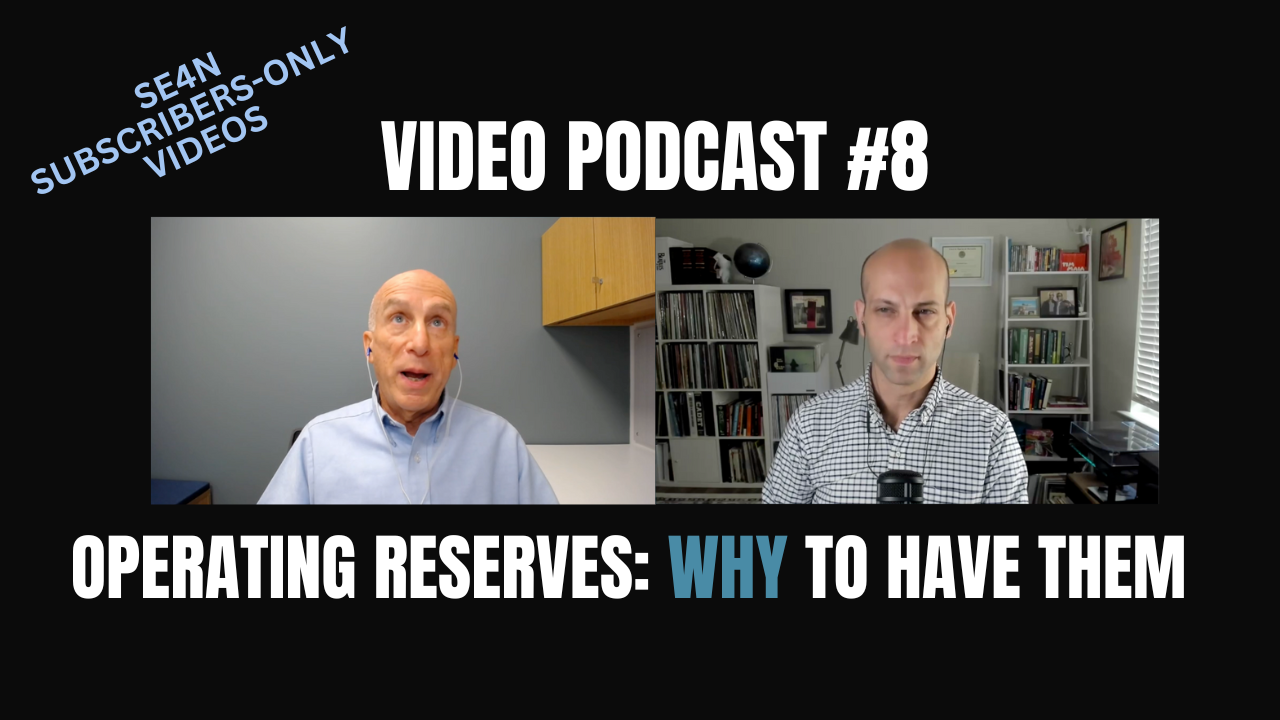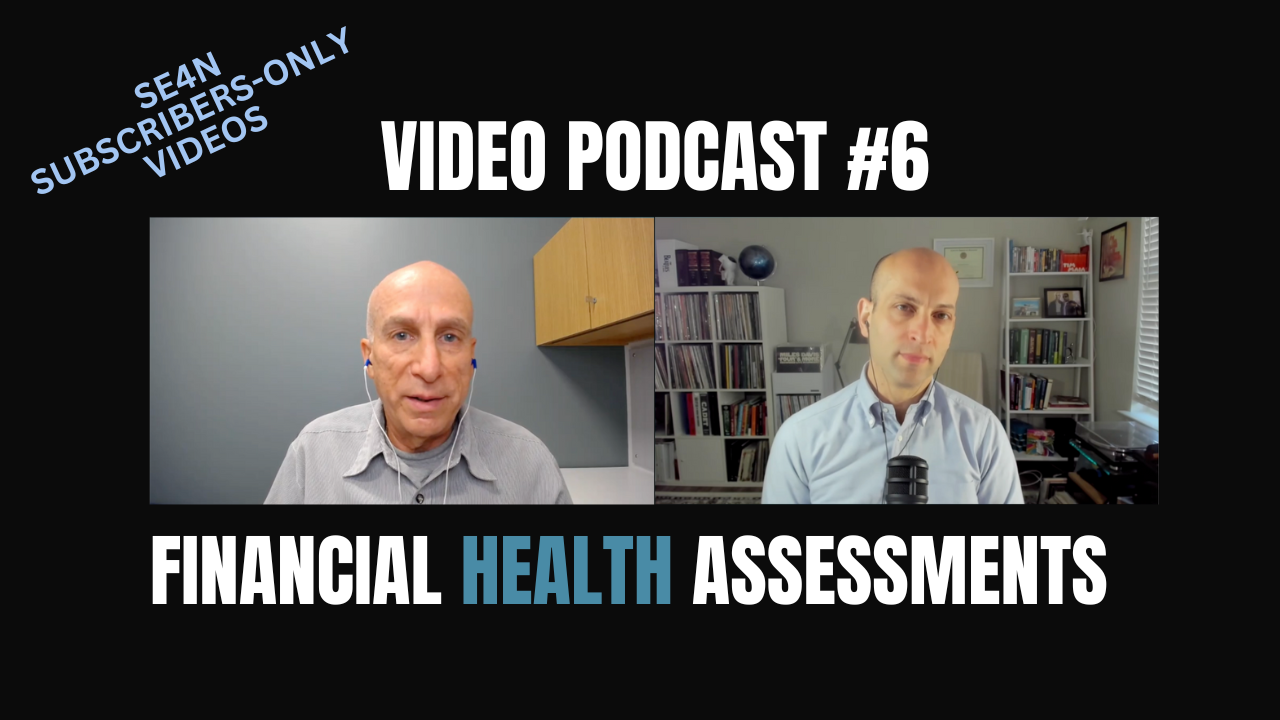
Blog.
Most Recent Posts

Operating Reserves as a Key Indicator of Financial Health
Just as the gauges on a car’s dashboard provide crucial information about its performance and physical condition, operating reserves serve as a vital indicator of a nonprofit organization’s financial health and as a measure of stability. Operating reserves give a clear view of an organization’s capacity to sustain its operations and weather financial uncertainties. By understanding and managing operating reserves, nonprofit leaders can navigate their organizations toward greater longevity and stability, ensuring they remain trusted and impactful stewards of their missions for years to come.
![VIDEO Q&A for Subscribers: November 2024 [PREVIEW]](https://images.squarespace-cdn.com/content/v1/5e6ccadfb4659c1d51df14d5/baccfbcd-ed95-49ed-b154-0bfec7efbc71/SE4N+Video+Q%26A+2024-11.png)
VIDEO Q&A for Subscribers: November 2024 [PREVIEW]
Ben and Mike answer questions from subscribers about the spending of operating reserves, conflicts of interest related founders of a nonprofit becoming staff, deciding between filing the Form 990-EZ and the Form 990, and legal issues raised by the moving of funds between related organizations.

TEMPLATE: Operating Reserves Status Report Spreadsheet
Operating reserves are one the most important components of financial health for a nonprofit organization and a key indicator for long-term fiscal and financial sustainability. Providing regular reports on the status of an organization’s operating reserves is essential for monitoring an organization’s financial health as well as compliance with its operating reserve policy.
![VIDEO Q&A for Subscribers: August 2024 [SUBSCRIBERS-ONLY]](https://images.squarespace-cdn.com/content/v1/5e6ccadfb4659c1d51df14d5/94ba66db-acce-4fa3-8f98-f369cd6d48d0/SE4N+Video+Q%26A+2024-08.png)
VIDEO Q&A for Subscribers: August 2024 [SUBSCRIBERS-ONLY]
Ben and Mike answer questions from subscribers about whether fixed assets and restricted funds can count toward a nonprofit organization's operating reserves, the pros and cons of taking over an existing 501(c)(3) organization rather than starting a new one, how abstentions are counted in a Board vote, and whether an organization should use a credit card or debit card.

VIDEO PODCAST: Why Nonprofits Should Have Operating Reserves
Ben and Mike discuss the reasons why operating reserves are essential for the financial health and sustainability of nonprofit organizations, the short-term and long-term purposes of operating reserves, lessons learned from past economic disruptions, and some recommendations for operating reserve policies.

Remembering the Long-Term Purpose of Operating Reserves
No one questions whether it is important for nonprofit organizations to build and maintain adequate operating reserves. This is a best practice that is not only widely accepted, but also an expected goal for senior management and governance to pursue and protect. However, there often is a tendency to focus too much on the short-term reasons for building and maintaining operating reserves causing us to lose sight of the often more important long-term purpose for building operative reserves.

VIDEO PODCAST: How and Why to Do Regular Financial Health Assessments for Your Organization
Ben and Mike discuss the importance of performing regular financial health assessments for a nonprofit organization, understanding the key components of an organization’s financial health and the appropriate financial health markers to track, how the Financial Health Assessment and Implementation Framework worksheet can be a valuable tool for your organization, and more.

Integrating Financial Health Assessments into Your Organization’s Planning Process
The markers for tracking and assessing a nonprofit organization’s financial health are not a mystery. The key elements of financial health (operating reserves, funding, and operational expenses) are generally easy to identify and understand. You just need a willingness to keep your eyes open and a commitment to pause and make an honest assessment of a financial picture that has most likely been changing.

How Inflation Affects Planning, Budgets, and Operating Reserves
Inflation has always been present at some level. When inflation is low, it lurks quietly in the corner of our minds. But when inflation is revving, the ringing in our ears will not go away. During periods of uncertainty and economic volatility, inflation tends to draw attention, often triggering regressive non-thinking reactions. Inflation needs to be treated as an economic reality to be confronted and a challenging obstacle to be solved, not as a call to action by itself.

The Overlooked Effects of Changing a Fiscal Year-End
“Should we change our fiscal year-end?” This an interesting question that will naturally pop up over time for many nonprofit organizations. As with most complicated, multi-layered questions, the highly visible positive aspects need to be balanced against potential negative outcomes that are often hidden or ignored. One often-overlooked downside of a change in fiscal year-end (FYE) is the impact on an organization’s operating reserves.

VIDEO: Formatting an Operating Reserve Policy | 5-Minute Lessons 4 Nonprofits
SE4N's A. Michael Gellman provides a short lesson on how to format an operating reserve policy in a way that shows your nonprofit organization's operating reserve goals in terms of both programs and percentage of budget, sets clear bottom-line budget targets, and provides a framework for operating reserve status reports.
![Time to Take a Fresh Look at Old Board-Designated Funds [SUBSCRIBERS-ONLY]](https://images.squarespace-cdn.com/content/v1/5e6ccadfb4659c1d51df14d5/1709987619004-PP72M5ZUDFOO03FFTIBG/oskars-sylwan-TaDYbj5q1Gc-unsplash.jpg)
Time to Take a Fresh Look at Old Board-Designated Funds [SUBSCRIBERS-ONLY]
In my professional life I view many financial statements from a wide variety of nonprofit organizations, and I am always amazed, but not shocked, by how many of these nonprofits have Board-designated funds sitting on their balance sheets. Two questions immediately come to mind. Why where they originally established? Is the purpose still relevant today? Often the answers lie in understanding the circumstances occurring at the time the Board originally designated the funds.

Operating Reserve Policies are a Perfect Vehicle for Targeting Your Budget’s Bottom-Line
Nonprofit organizations would greatly benefit from adopting a standardized policy for strategically targeting and managing their annual budget bottom-line. You could argue that there is no greater safety net for overall financial health than having a formal policy, or at least a budget working rule or guideline, for this important metric.

Using Operating Reserves During a Crisis: When and How Much?
Many nonprofit organizations have worked very hard over numerous years to build up operating reserves to a level that allows them to be considered a financially healthy organization with enhanced sustainability prospects for weathering an unexpected economic downturn. However, now that we are in the midst of a full-blown economic crisis, organizations that have built-up substantial operating reserves are faced with a real quandary of answering two simple questions: When? and How Much?

Impact of Hyper Change on Financial Health and Continuity
During extraordinary times of hyper change, we are confronted with so many changing elements that making effective management decisions seems overwhelming and finding a starting point feels impossible.